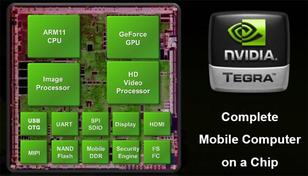
CPU vs GPU: Key Architectural and Functional Differences
Explore the core differences between CPUs and GPUs, including their architectures, parallel processing capabilities, and application in SoCs.
Advertisement

Explore the core differences between CPUs and GPUs, including their architectures, parallel processing capabilities, and application in SoCs.

Understand the differences between CT and CBCT scanners, including how they work, their advantages, and disadvantages. Learn about beam shape, radiation dose, and more.
Explore the key differences between CUDA and OpenCL for parallel computing, including features, vendor support, and use cases to determine the best choice for your needs.

Explore the benefits and drawbacks of using a Cyclic Prefix (CP) in Orthogonal Frequency Division Multiplexing (OFDM) systems. Learn how it mitigates ISI but impacts capacity.

Explore the cyclic prefix (CP) in OFDM: its crucial role in mitigating intersymbol interference, preserving subcarrier orthogonality, and ensuring reliable wireless data transmission.
Overview of Cyclic Redundancy Check (CRC) techniques, including CRC32 and CRC16, commonly used for error detection in wireless communication standards.

Explore the differences between Device-to-Device (D2D) and Machine-to-Machine (M2M) communication, including range, network reliance, and applications.
Understand the relationship between DAB channels and frequency multiplexes, with a UK-specific frequency list for Digital Audio Broadcasting.
Explore the key differences between DAB, DVB, and DMB technologies. Learn about their features, frequency bands, modulation techniques, and applications in digital broadcasting.
Explore the distinctions between DAB and DAB+ digital radio broadcasting standards, focusing on audio codecs, quality, station capacity, and compatibility.
Explore the benefits and drawbacks of DAB (Digital Audio Broadcasting), a digital radio standard used globally. Learn about its features and limitations.
Explore the differences between DAB+ and DRM+ digital audio broadcasting technologies, focusing on frequency, bandwidth, modulation, and data speed.

Explore the benefits and drawbacks of data analytics in business, including improved decision-making, privacy concerns, and implementation costs.

Explore the definition of data cleansing, its use cases in MDM, CRM, DWH, and BI, and the challenges associated with ensuring data quality.

Explore the pros and cons of data compression, including storage efficiency, data loss, and compatibility issues. Understand when and how to use it effectively.

Learn about data deduplication, a storage optimization technique that eliminates redundant data copies to save storage space and bandwidth. Discover its benefits and working process.

Explore essential data mining terms in this glossary, covering data mining engines, knowledge bases, data warehouses, and core processes like data cleaning and integration.

Explore the benefits and drawbacks of data mining, including its applications in finance, advertising, and retail, as well as its potential privacy and security risks.

Explore data profiling: definition, tasks, use cases (query optimization, data cleansing), and challenges (complexity, space, evolving data).

Explore the fundamentals of Dead Reckoning (DR) navigation systems, including how they function using gyroscopes and distance traveled to estimate position without satellite signals.
Advertisement